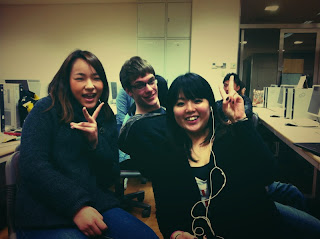However, this project made me rethink about the Japanese traditions which I will never do without this blogging. Sometimes it was difficult from my perspective to choose a unique topic which is not really common because I wanted to share new things to people whom do not know well about Japan.
After few posts, I noticed that this is not something I will do on my own. However, the project gave me a realization of importance of living in Japan. I believe that unless I am in Japan, I will never realize this. I gave a conclusion within myself that I like Japan and I noticed how many valuable things we have in Japan. In a few months, hopefully, I will be in the states where the culture is completely different and I am sure I will miss Japanese culture and tradition so badly.
Also, I found a interest in taking photos and looking at other perspectives through visual by this visual anthropology blog posting. I hope my postings at least helped some people to look at to learn and know about Japan. I really enjoyed the postings and observing. Thank you:)
"Cherry Blossom's Culture Observation"- by Sakura











.JPG)
.jpg)




